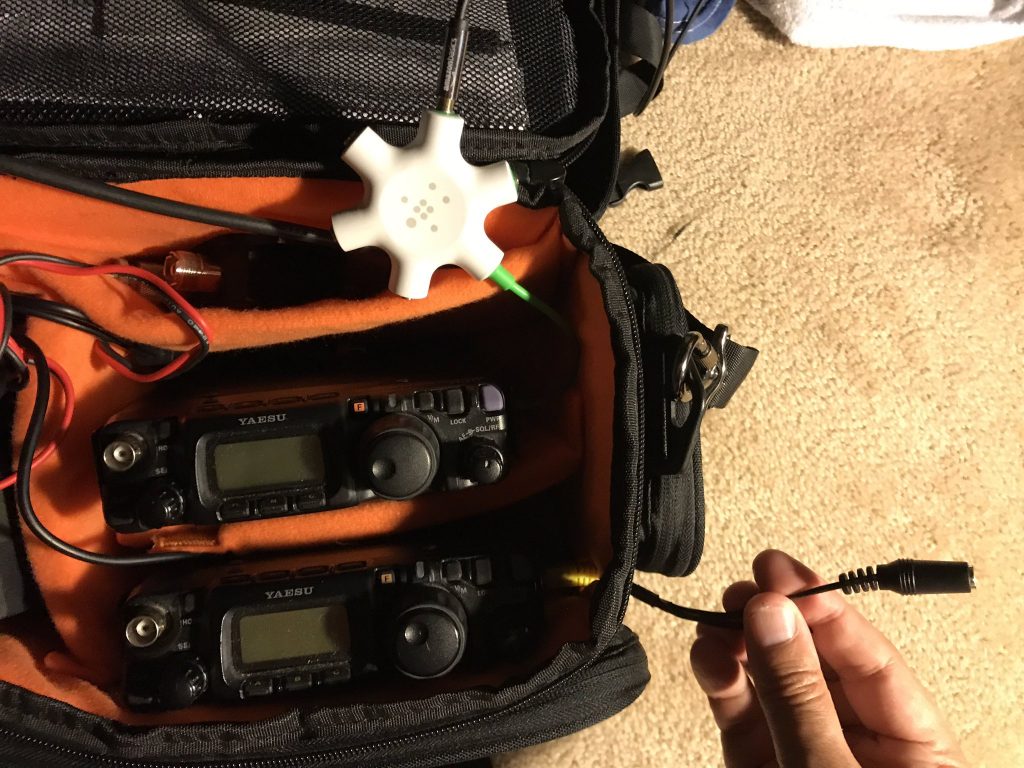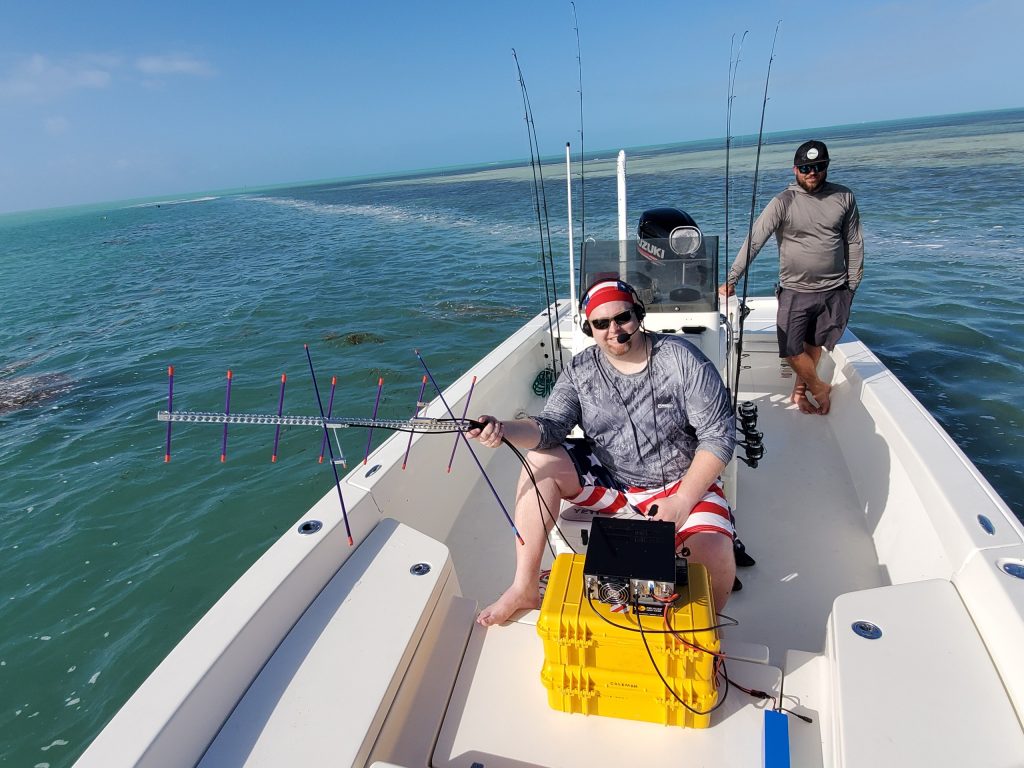It’s pretty amazing that with a dual-band HT and a relatively small antenna, Hams can communicate with each other via satellites orbiting overhead several times a day. But as good as that experience is, most soon encounter some of the FM birds’ limitations. Because they are essentially an orbiting repeater, only one person may access the satellite at a time. This creates a bottleneck of users trying to make a contact, especially on peak usage times such as weekends. Eventually, Hams who are serious about satellite operating realize these problems can be avoided by moving on to the linear satellites. Here’s how youcan make the move yourself (hint: it’s NOT that difficult!).
Why Linear?
There are several advantages to getting on the linear satellites. If nothing else, it gives you access to more satellites, which affords you more flexibility to play radio on your schedule. Remember, satellite operating isn’t dependent on propagation conditions, and every single pass is predictable far in advance.
Unlike the single-channel FM satellites, linear birds use SSB and CW. They also utilize a transponder, which provides anywhere from 20-50 KHz of bandwidth to use. This means multiple people can make contacts through a linear satellite simultaneously. It’s just like tuning across an HF band.
More bandwidth means you can spread out and enjoy operating satellites at a more leisurely pace. Ragchewing is almost impossible on FM satellites due to the number of people trying to use one during any given pass. On a linear satellite, you have the relative luxury of being able to enjoy a conversation if you want to.
With people being able to spread out across several KHz, the QRM can be much less. That’s not to say it will disappear completely, but it’s definitely possible that several people can make contacts at the same time and not interfere with each other.
Equipment Needed
You may be surprised how much gear you already have to begin working on the linear birds. The biggest requirement is the ability to transmit and receive simultaneously on 2 meters and 70 centimeters. This is known as full-duplex operating. While it is a significant advantage (but not necessary) to make contacts on an FM satellite, it is required on the linear birds. Simply put, you have to be able to hear your own signal coming from the downlink frequency and maintain reception of it throughout the entire pass before you can make contacts. See my previous blog on full-duplexfor more info.
Do you have a DC-to-Daylight radio that transmits on 160 meters through 70 centimeters? Congratulations, you’re halfway there! Find another radio that can function as a receiver on either 2 meters or 70 centimeters and you are ready to go. You have many options for receiving on that second band. You may want to get a second radio like you currently have or pick up an older VHF/UHF single- band rig. Some operators look for a used VHF/UHF all-mode with blown transmit finals; as long as it receives well, you may find a rig in that condition for a good price. Another inexpensive option is to use a software-defined radio (SDR) as your receiver, such as the DX-Patrol MK4.
Of course, there are several rigs that offer satellite capability within a single box. Older models such as the Icom 821 or the Yaesu FT-847 show up at flea markets regularly. Newer models, such as the Icom 9700, can get you on satellites with the latest technology and features. Ops who enjoy going portable have long used a pair of Yaesu FT-818 HF/VHF/UHF All-Mode Portable Transceivers. This option provides a full-duplex all-mode satellite station in a small package.
The next thing you will need is a duplexer, which will isolate your transmit signal on one band from your receive band. Without a duplexer, you will overload your receiver due to the close proximity of your transmitter, and you won’t hear anything at all during transmit. Both Comet and MFJmake excellent duplexers for satellite ops.

Lastly, you’ll need antennas for 2 meters and 70 centimeters. While vertical antennas such as the M2 Eggbeaterwill allow you to work some passes, they are not as effective as small Yagis. Yagis offer gain and the ability to point directly at the passing satellite. Home stations can use any VHF/UHF Yagi; even short Yagis with 3 elements on VHF and 5 elements on UHF can be effective. For the DIYer, Kent Britain, WA5VJB, has an article on “Cheap Yagi” designs you can build for the satellites. Portable operators can consider a handheld, dual-band Yagi such as the DUOSAT from EAntenna.
Finding Yourself on the Downlink
Because linear satellites have a transponder you tune across like an HF band, finding yourself on the downlink can be tricky for newcomers. Clayton Coleman, W5PFG, recently-elected president of AMSAT (Radio Amateur Satellite Corp.), is a longtime satellite operator and grid activator. I asked him for tips on this most important aspect of linear satellite operating. Here’s what he said:
Finding oneself is often met with jokes about seeking direction from a guru. When it comes to amateur radio satellites, finding yourself is a challenge often met with frustration by novice satellite users trying to score their very first contact on a linear transponder. Here are some basics to consider:
- Understand the relationship between inverting and non-inverting
transponders. Most linear transponders today are inverting, meaning that
as you tune the uplink higher, the downlink will decrease, and vice versa. It’s
important to note this is a setting in many satellite-ready radios that can be
easily mis-configured. If you’re using a modern transceiver with a dedicated
satellite mode (Icom 910/9100/9700, Yaesu FT-736/847, Kenwood TS-790/2000), it
is very important that you not lock the VFOs during a QSO or expect the marriage
of the two VFOs to compensate for any shift in frequency related to the Doppler
effect.
- The convention for linear transponders is to listen to your downlink in USB while transmitting in LSB. There are occasional exceptions, but this is something you should familiarize yourself with before transmitting.
- Similar to point one above, you should familiarize yourself with the relationship between your uplink and downlink. AMSAT’s laminated frequency chart is a handy reference that demonstrates this relationship for satellite users. As an example, to use AO-7’s transponder, transmitting at 432.165 MHz would place your downlink signal around 145.935 MHz. If you were to move your transmitted signal down 5 KHz to 432.160 MHz, your frequency at the satellite would increase by 5 KHz to 145.940 MHz. This relationship is affected by Doppler shift, and during the course of a satellite pass, you will need to make adjustments accordingly to stay on frequency.
- If you don’t hear yourself the first time you try, don’t worry. Often new satellite users will swing their VFO from one end of the passband to another while transmitting either a whistle, their callsign, or a CW tone, wasting a lot of time in the process. If you pay attention to the uplink/downlink relationship before you begin, you will find yourself on the transponder much more quickly.
- It is often asked, “Do we still tune the higher of the two frequencies?” I would suggest further reading from an article entitled, “Bringing the One True Rule of Doppler Tuning into the 21st Century” by Alan Biddle, WA4SCA, based on the original 1994 work by Paul Williamson, KB5MU. Using some of these principles described above, you will have a good footing for beginning your learning toward mastery of finding yourself on a linear transponder satellite.
There are numerous resources that go into depth on the process for finding yourself on a linear transponder, such as AMSAT’s book Getting Started with Amateur Satellites.

Making the switch from FM to linear satellites isn’t as tricky as you think. The benefits of more bandwidth and the ability for multiple users to make QSOs simultaneously make the transition worthwhile. I’m confident that with a little practice, you will be making contacts on the linear birds faster than you think.
Drop me a line [mailto:kx9x@yahoo.com] when you are up and running on the linear satellites; I’d love to work you!


Pingback: Satellite Basics (Part 3): Upgrading to the Linear Satellites - Ham Radio News
Pingback: Lineaire satellieten: overstappen is niet moeilijk - VERON